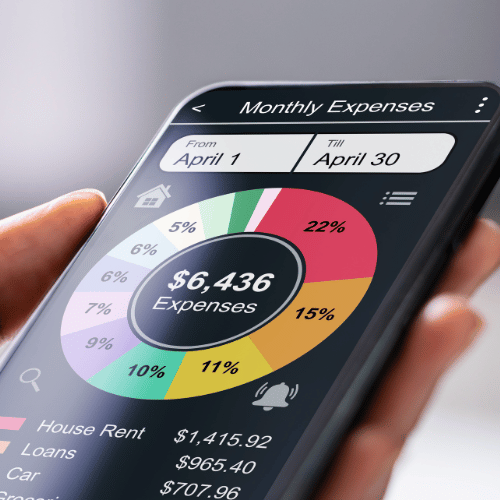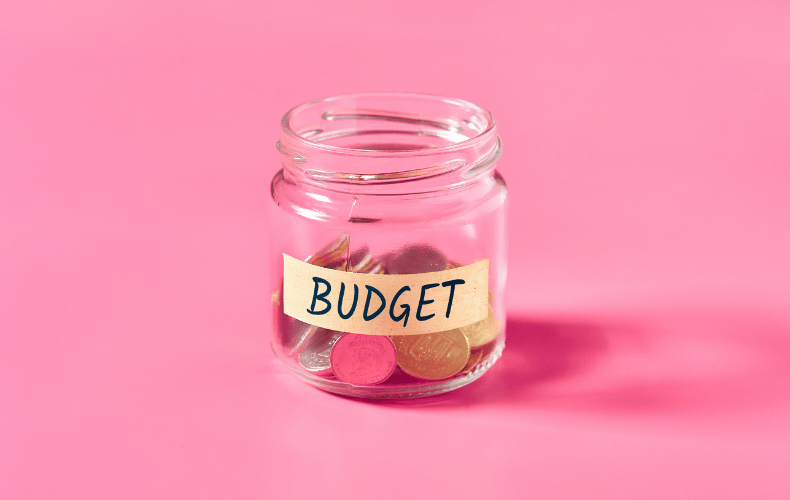- admin
- May 31, 2024
- No Comments
Budgeting & Saving Money
To become financially stable and reach your long-term goals, you need to be able to manage your money well. Making a budget and saving money are important habits that can help you stay on track, whether you’re saving for a big purchase, an emergency fund, or just trying to keep up with your daily costs. This article gives detailed instructions on how to make and stick to a budget, as well as tips for people with different amounts of income and useful ways to save money.
Importance of Budgeting and Saving Money
Basic financial health includes making a budget and saving money. If you make a budget, you’ll know exactly where your money is going, which will help you prioritize your spending and stay out of debt. Saving money helps you be ready for emergencies, future purchases, and retirement.
Benefits of Effective Financial Management
Stress levels go down, financial security rises, and you can reach your financial goals when you manage your money well. Informed financial decisions, staying out of debt, and building wealth over time are achievable with it.


Creating a Budget
Assessing Your Income and Expenses
Start by adding up all of your monthly income, such as your salary, investments, and any side jobs you have. Next, write down everything you spend for a month to see where your money goes. Divide costs into two groups: fixed (like rent and utilities) and variable (like groceries and entertainment).
Setting Financial Goals
Set both short- and long-term financial goals. Short-term goals could be to save money for a trip or to pay off credit card debt. Long-term goals could be to save money for a house down payment or for retirement.
Choosing a Budgeting Method
Select a budgeting method that works for you. Some common ways are:
- Zero-Based Budgeting: Put every dollar you spend into a certain category until you have no money left.
- 50/30/20 Rule: Spend 50% of your income on things you need, 30% on things you want, and 20% on savings and paying off debt.
- Envelope System: To keep track of extra spending, put cash in different envelopes for different types of spending.
Maintaining a Budget
Tracking Your Spending
Keep track of your spending on a regular basis to make sure you stick to your budget. Track your spending with budgeting apps or spreadsheets and make changes as needed. Tracking helps you find places to save money and cut back.
Adjusting Your Budget
As you go through life, your budget should change too. Review and change your budget often to account for changes in your income, expenses, and financial goals. Being flexible with your budget keeps it useful and effective.
Staying Disciplined
It takes self-control to stick to a budget. To keep yourself from buying things you don’t need, set up automatic transfers to your savings account or give yourself rewards when you reach savings goals.


Tips for Various Income Levels
Low-Income Budgeting
- Prioritize Needs Over Wants: Spend less on things that aren’t necessary and more on things that are.
- Utilize Community Resources: Use food banks, free health clinics, and other resources in your community.
- Find Additional Income Streams: To make extra money, look into part-time jobs or side gigs.
Middle-Income Budgeting
- Increase Savings Rate: You should put more of your income into savings and investments.
- Plan for Major Expenses: Save money for things like home repairs and car maintenance that you will need in the future.
- Review Subscriptions and Memberships: Get rid of subscriptions and memberships that you don’t use to get extra money.
- High-Income Budgeting
Maximize Retirement Contributions: Make the most of your retirement accounts, such as 401(k)s and IRAs. - Diversify Investments: Stocks, bonds, and real estate are some other types of investments that you might want to look into besides traditional savings accounts.
- Maintain a Frugal Mindset: Stay away from lifestyle inflation and keep saving and investing as your top priorities.
Strategies for Saving Money
Building an Emergency Fund
For financial security, you need to have an emergency fund. Put three to six months’ worth of living costs into a high-yield savings account. Start by giving small amounts on a regular basis and slowly increase it over time.
Saving for Large Purchases
Set up a savings account just for big purchases like a house or car. Figure out how much you need to save each month and set a goal amount and time frame. Put money into this account automatically to stay on track.
General Savings Advice
- Automate Savings: To make sure you always put money into your savings account, set up automatic transfers.
- Reduce Utility Bills: To lower your utility bills, use energy-efficient appliances and unplug electronics when not in use, among other things.
Shop Smart: To save money on groceries and other things around the house, use coupons, buy in bulk, and wait for sales.


Conclusion
Making and sticking to a budget and finding good ways to save money are important steps to getting your finances in order and reaching your financial goals. These habits can help you get a handle on your money, feel less stressed, and plan for a bright future whether you have a low, middle, or high income. Start right now by looking at your money, making some goals, and picking a budgeting method that works for you. You can take charge of your money and be financially stable for a long time if you are disciplined and dedicated.







